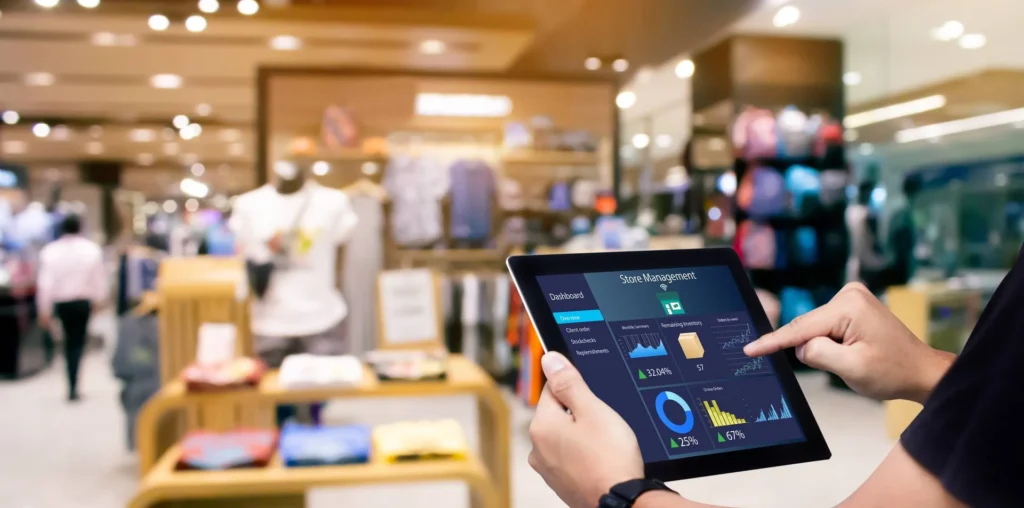Key Features to Look for in Retail Automation Software Today
In an increasingly competitive and technology-driven marketplace, modern retailers are under constant pressure to streamline operations, enhance customer experience, and scale their business. One of the most strategic investments to meet these goals is implementing Retail Automation Software. But with dozens of solutions available, how do you choose the right one?
Selecting the right retail automation software involves more than just checking off a list of functions—it requires understanding your specific business needs and identifying the features that will drive efficiency, improve decision-making, and future-proof your retail operations.
In this article, we’ll explore the key features to look for in retail automation software today so you can make an informed decision that empowers your business for long-term success.
Why Retail Automation Software Matters More Than Ever
Retail Automation Software is no longer just a tool for large retailers—it’s essential for businesses of all sizes. From streamlining inventory and sales tracking to managing employees and analyzing customer behavior, automation enables retailers to reduce manual tasks, cut costs, and stay agile in a fast-moving market.
Retailers leveraging automation experience benefits like:
- Increased operational efficiency
- Enhanced customer satisfaction
- Real-time insights and analytics
- Reduced labor costs and human error
- Seamless omnichannel integration
But not all software is created equal. To truly harness these benefits, it’s important to choose a solution with the right features.
Top Features to Look for in Retail Automation Software
Here’s a breakdown of the most critical features to consider when evaluating retail automation software for your business:
1. Real-Time Inventory Management
Inventory is the heart of retail. Inaccurate stock levels can lead to overstocking, stockouts, and lost revenue.
Look for:
- Automatic stock updates across locations
- Barcode or RFID integration for real-time tracking
- Low stock alerts and reorder automation
- Inventory reconciliation tools
This feature ensures that your product availability is always up to date, reducing waste and increasing sales.
2. Integrated Point-of-Sale (POS) System
A powerful POS system doesn’t just process payments—it integrates with inventory, CRM, and analytics.
Look for:
- Mobile POS capabilities
- Multiple payment methods (card, NFC, digital wallets)
- Real-time sync with inventory and sales data
- Customer data capture and loyalty integration
A modern POS system ensures faster transactions and richer data, both of which are vital to retail success.
3. Customer Relationship Management (CRM)
Understanding your customers is crucial for personalization and retention. CRM features in retail automation software help build long-term customer relationships.
Look for:
- Customer profile creation and purchase history tracking
- Email/SMS campaign automation
- Loyalty program management
- Behavioral insights and segmentation
This allows you to engage your customers more effectively and boost repeat purchases.
4. Employee Scheduling and Time Tracking
Efficient workforce management is essential in retail, where staffing levels directly impact service quality and cost.
Look for:
- AI-driven schedule generation based on foot traffic trends
- Digital time tracking and attendance logs
- Shift swapping and availability management
- Integration with payroll systems
Retail automation can eliminate scheduling conflicts and reduce unnecessary labor expenses.
5. Omnichannel Integration
Today’s shoppers use multiple touchpoints—online, mobile, and in-store. Your software should support seamless operations across all of them.
Look for:
- Centralized inventory across online and physical stores
- Unified customer profiles regardless of channel
- Real-time order and return syncing
- Click-and-collect and ship-from-store functionality
Retail automation software with omnichannel support ensures that customers have a consistent experience no matter where they shop.
6. Advanced Reporting and Analytics
Retail is a data-driven business. Analytics give you insights to make smarter decisions, improve marketing, and optimize operations.
Look for:
- Customizable dashboards
- Real-time sales reports by store, category, or product
- Customer behavior and lifetime value tracking
- Inventory turnover, sell-through rates, and forecasting
Analytics enable you to respond to trends quickly and make data-backed strategic moves.
7. Supplier and Order Management
Managing suppliers efficiently can lead to better pricing, fewer delays, and improved supply chain performance.
Look for:
- Automated purchase order creation
- Supplier performance tracking
- Delivery and restock scheduling
- Centralized order history and invoicing
Automating supplier management ensures you always have the right products at the right time.
8. Marketing and Promotions Automation
Retail automation software should also support marketing efforts to help drive foot traffic and conversions.
Look for:
- Automated campaign creation and scheduling
- Personalized offers and product recommendations
- Integration with social media and email platforms
- Real-time promo performance tracking
These tools allow for targeted outreach without constant manual input.
9. Scalability and Customization
Your business may start small, but your software should be ready to grow with you.
Look for:
- Modular features and pricing plans
- Support for multi-location or franchise models
- Custom fields and workflows
- API access for integrations with third-party tools
Choosing scalable retail automation software helps you adapt as your needs evolve.
10. Cloud-Based Accessibility and Mobile Support
Retailers need access to their systems from anywhere—especially those managing multiple stores or mobile sales.
Look for:
- Cloud hosting for data access from any device
- Mobile-friendly dashboards and POS terminals
- Offline capabilities with automatic syncing
- Secure data backups and encryption
Cloud-enabled solutions provide flexibility, security, and speed for your operations.
11. User-Friendly Interface and Training Resources
Even the most advanced software won’t succeed if your team can’t use it effectively.
Look for:
- Intuitive UI and navigation
- Onboarding tutorials and live training
- Role-based access controls
- Customer support availability (chat, phone, email)
An easy-to-use platform boosts adoption rates and productivity across your organization.
Bonus: Integration with Accounting and E-commerce Platforms
To reduce manual data entry and streamline your workflows, your retail automation software should integrate with platforms like:
- QuickBooks or Xero for accounting
- Shopify, WooCommerce, or Magento for e-commerce
- Square or Stripe for payment processing
These integrations save time, prevent data duplication, and ensure financial accuracy.
Conclusion: Invest Wisely in Automation
Choosing the right retail automation software is a crucial decision that impacts every aspect of your business—from inventory and employees to customers and sales strategy. The right features will not only streamline operations but also improve customer satisfaction, increase profitability, and give you the competitive edge you need to thrive in today’s fast-paced retail landscape.
As you evaluate your options, focus on the features that align with your business goals, offer scalability, and provide the insights you need to grow. Automation is no longer optional—it’s essential.




